Africa's Wetland Wilderness
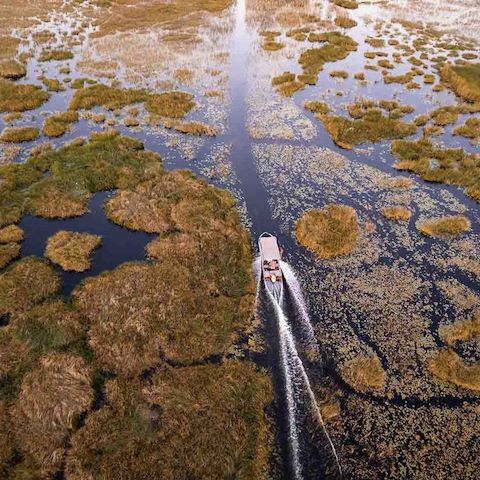
The Okavango Delta, known as the "Jewel of the Kalahari”, is one of Africa’s most unique and captivating ecosystems. Each year, this inland delta undergoes a dramatic transformation as the waters arrive, creating a lush, wildlife-rich paradise in the heart of the Kalahari Desert. For those looking to travel to this remarkable region, understanding the intricacies of this flood cycle ensures an authentic and engaging experience no matter the season.
The Source: the Journey begins in Angola
The origin of the Okavango Delta's life-giving waters has an extraordinary story that starts over 900 miles away in the highlands of Angola. Here, the mighty Okavango River begins as a mere trickle before it gathers strength and becomes the third-largest river in Southern Africa. This river travels through three countries, descending from Angola’s fertile highlands, where it is known as the Cubango River, meandering through Namibia where it’s called the Kavango, before reaching Botswana, where it creates one of the largest inland deltas in the world.
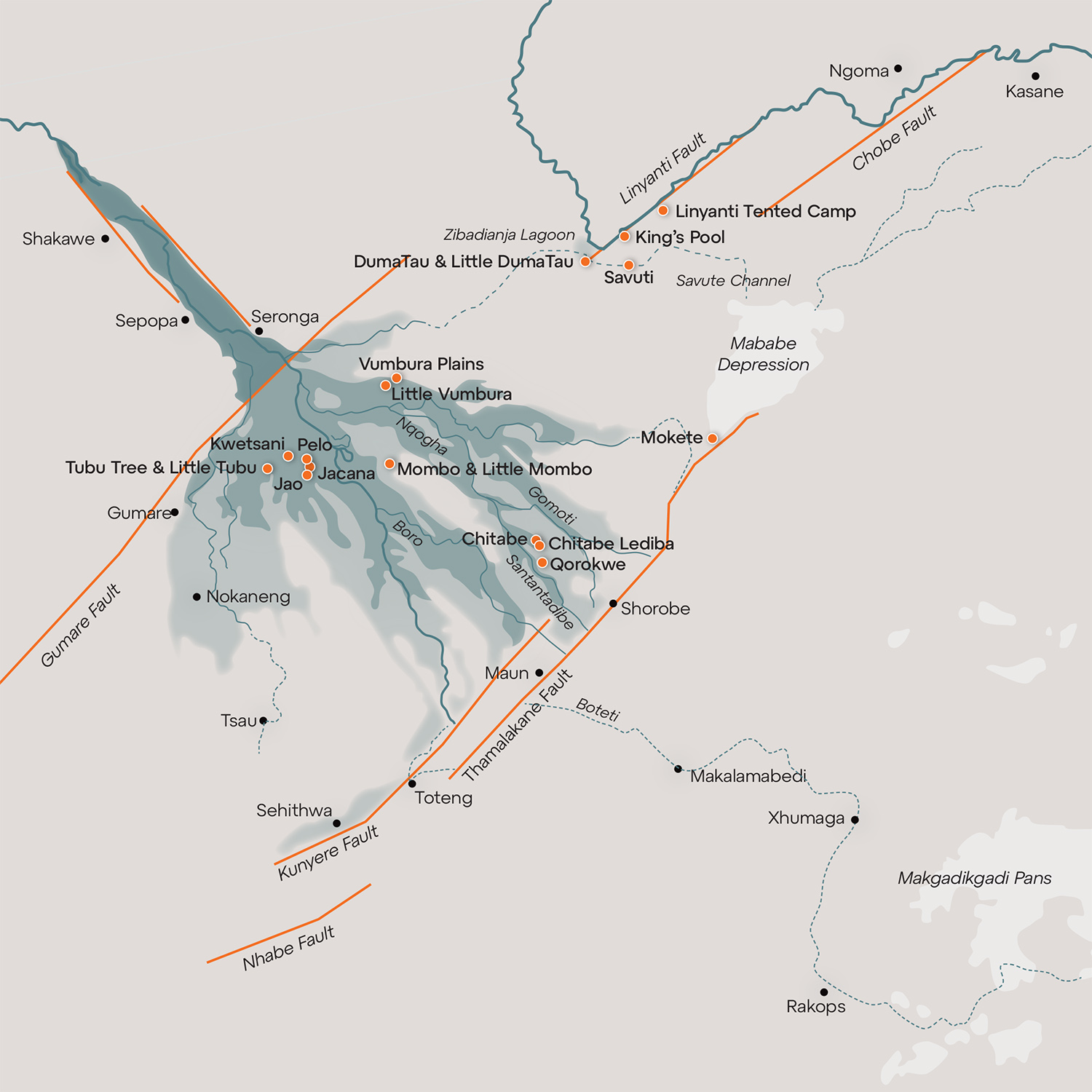
Around 60,000 years ago, the Okavango River’s path was significantly altered by seismic activity. Back then, it deposited its waters into Lake Makgadikgadi, a vast paleolake that once covered over 100,000 km2 (around 25,000,000 acres) of Botswana's interior. However, seismic events in Southern Africa created a tectonic trough that altered the course of the river, blocking its original path and diverting the water into the Kalahari Desert. This diversion led to the creation of the Okavango Delta, a basin with no outlet to the sea.
The Okavango River flows into the Delta, spreading across an area between 6,000 to 15,000 km2, (around 1,483,000 to 3,707,000 acres) depending on the season. This seasonal expansion and contraction of the Delta is what makes it such a dynamic and mesmerising destination.
Timeline of the flood
The timeline of the Okavango Delta’s inundation is key to understanding the region's ecology and tourism. The floodwaters from Angola typically reach the northern parts of the Delta around May, but due to the Delta’s flat terrain and the slow-moving nature of the water, it takes several months for the waters to spread across the entire area. The peak flood season, when the Delta is at its fullest, usually occurs between June and July.
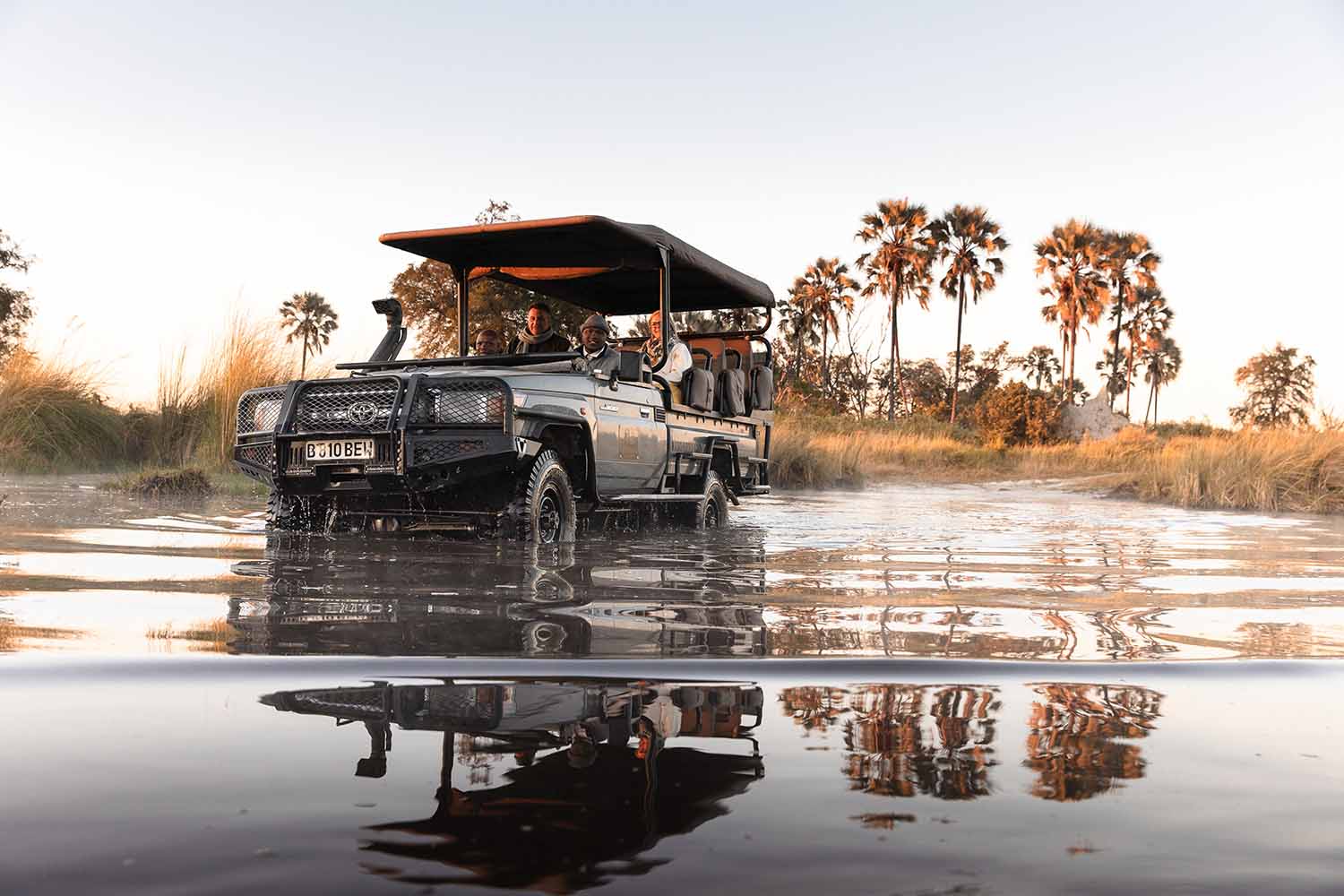
This slow and deliberate rise in water levels is what makes the Okavango Delta so unique. Unlike other wetland areas where water levels rise and fall quickly, the Okavango Delta’s floodwaters move at a leisurely pace, creating a prolonged period of optimal conditions for wildlife viewing.
Impact on wildlife and tourism
The Okavango Delta’s annual inundation is the lifeblood of its diverse and abundant wildlife. As the waters rise, they create a mosaic of channels, lagoons, and islands that provide critical habitat for a wide range of species. The Delta is home to an abundance of predators, as well as large herds of red lechwe, secretive sitatunga, wild dogs, hyenas, and massive herds of buffalo and elephants that are drawn to the water during the dry season.
Tourism in the Okavango Delta is largely shaped by the waters’ cycle. During the peak of the inflow, water-based activities are the main draw. These activities allow visitors to glide through the labyrinth of waterways, getting up close to wildlife in a way that is both intimate and exhilarating. Many of the Delta’s luxury lodges are located near permanent lagoons, offering exclusive access to some of the best wildlife viewing in the region.
The Boro Channel, which runs through the Jao Reserve, has a lot of capillary channels which fill up, meet thick papyrus vegetation and push back on themselves, spilling over and filling up the floodplains. This allows for great water-based game-viewing activities, like mokoro and boat rides at camps like Wilderness Jao.
“The filling floodplains affect game-viewing in two ways”, explains Craig Glatthaar, head of sales: Americas.
“On the one hand, traversing can be restricted by the inundation of water. On the other, it can concentrate wildlife on higher ground, which is why we see such abundance in places like Hunda Island, the home of Wilderness Tubu Tree and Little Tubu, when the Jao Flats fill up.“
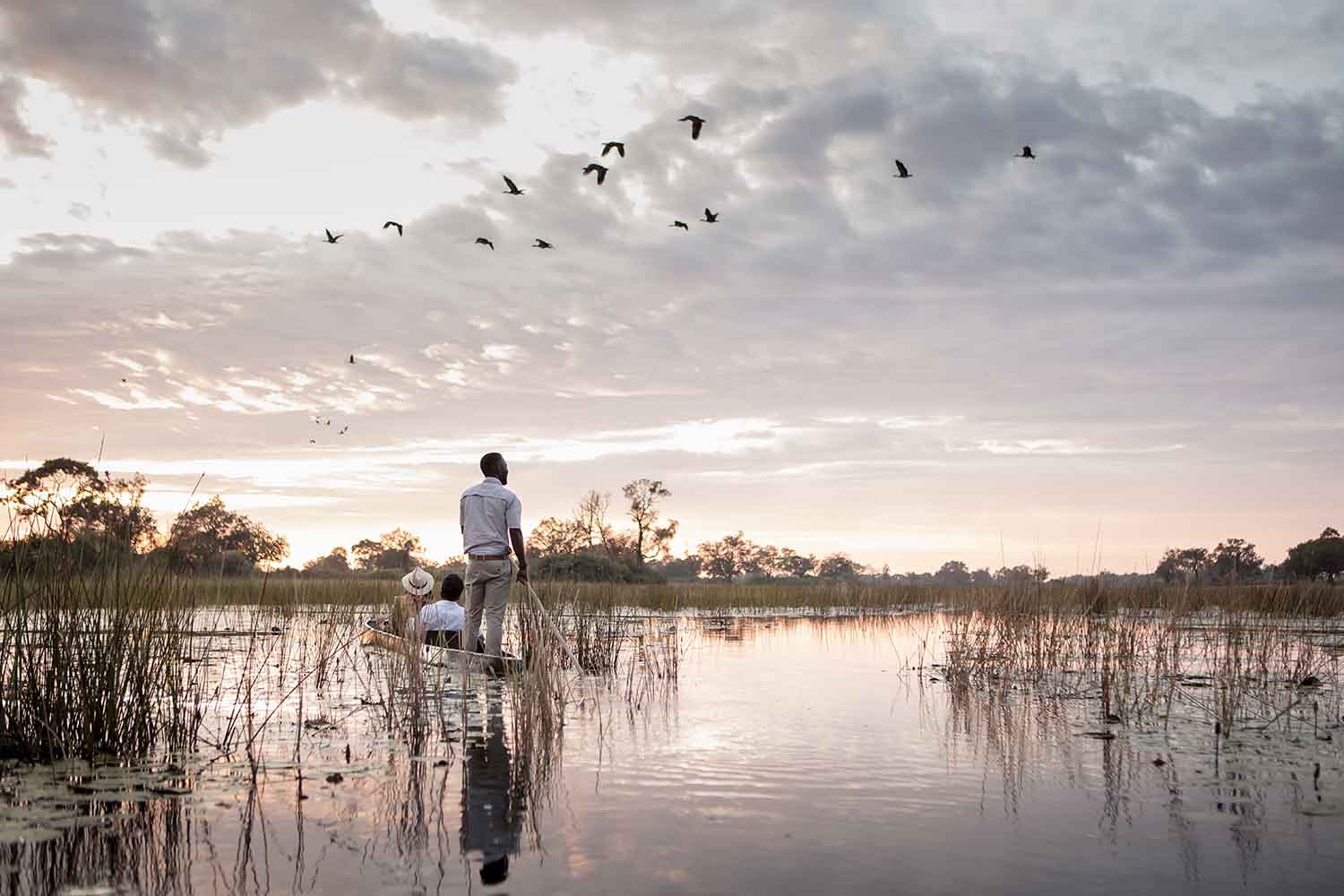
“At the moment, there's less water flowing into these capillary channels, so fewer floodplains are full of water”, says Craig.
“We’re seeing more wildlife moving onto the floodplains, there’s more traversing area, and more wildlife viewing at camps that offer water- and land-based activities”.
In the eastern part of the Okavango Delta, two channels play a part in making the area around Wilderness Chitabe, Chitabe Lediba and Qorokwe one of the most productive game viewing regions in the delta.
Wilderness Jao
Wilderness Jao
Wilderness Tubu Tree
Wilderness Chitabe
Wilderness Qorokwe
The two main channels in the area, the Gomoti and the Santantadibe, originate through the Mboroga-Santantadibe-Gomoti catchment, and further upstream the Nqogha, which is the primary eastern Delta feeder.
“Unlike a braided river, these are single, meandering channels, with very few subsidiary channels, meaning wildlife is not dispersed, and tends to congregate along the channel edge”, explains Craig.
“These channels surround a peninsula of sorts, a sand tongue of extremely diverse habitats. These converging habitats, or ecotones, support not only an immense volume of wildlife, but impressive diversity too; and it’s a combination of these factors that make this arguably the best game viewing area in Botswana”.
The role of rain in the Delta
There is a fundamental difference between the “wet/rainy season” in the Okavango and the “flood season”. The rainy season begins in November and ends around March, bringing with it thick vegetation and a burst of life. However, the waters from Angola, which take months to travel to Botswana, only begin to arrive in May, peaking in June and July. This delayed inundation creates a unique seasonal cycle. Local rains contribute to the Delta’s water levels but do not dictate their timing or extent.
This year, Southern Africa has received below average rainfall. Despite this, there is relatively good water flow in the Delta, supported by good rainfall in the Angolan highlands.
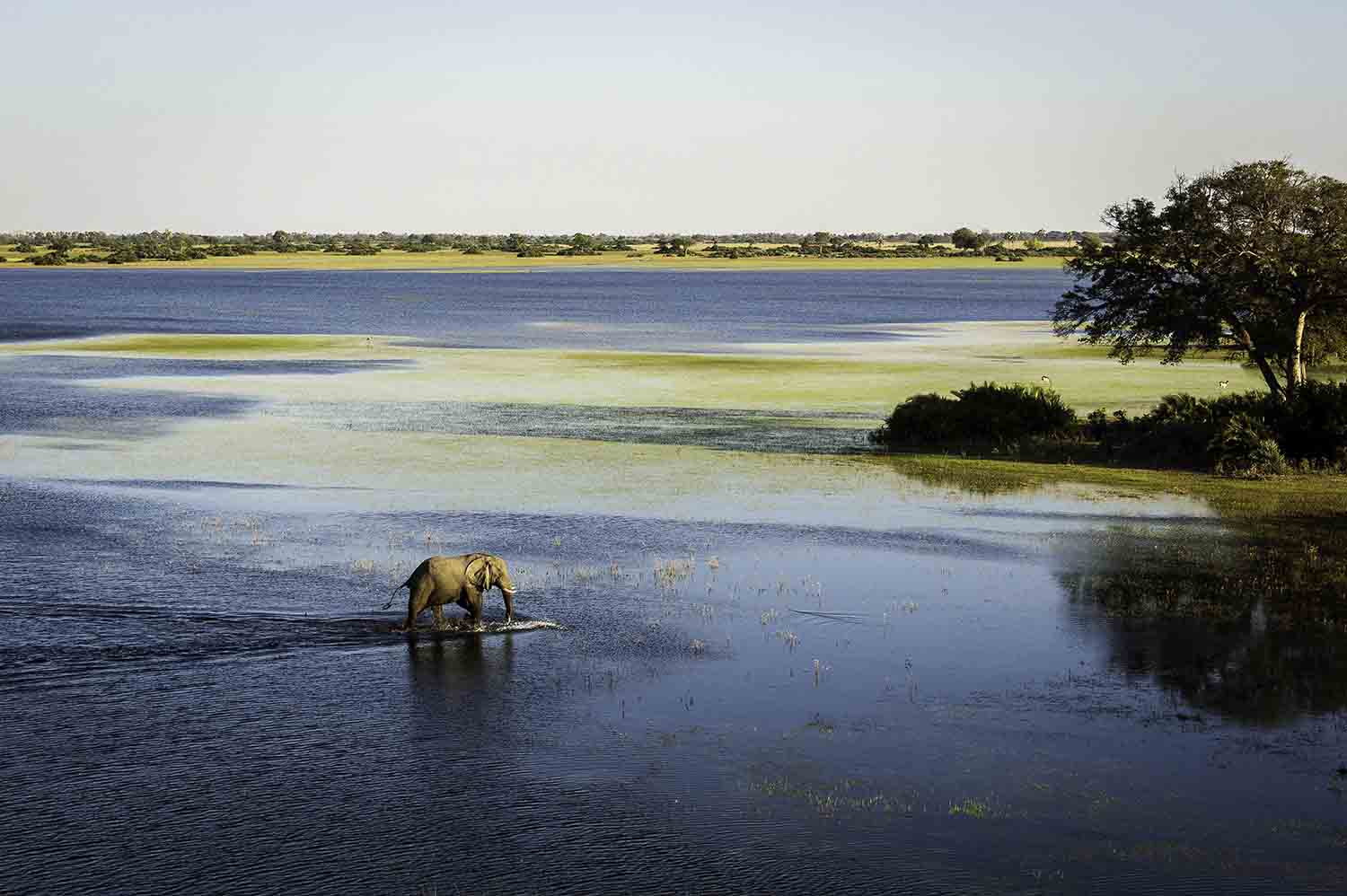
“This year we have not seen the two significant spikes in water levels as we’ve seen in other years, but we have seen a consistent push since April. There has been steady inflow, but little local rain. The dynamism of the Delta is what makes the inundation such an exciting ecological event”, explains Craig.
The Okavango Delta’s dynamic environment, shaped by its seasonal flood cycle, offers a completely unique opportunity to see an extreme diversity of wildlife in their natural habitat. The balance of water levels and land conditions directly influences the availability of habitats, making each season distinct. Whether navigating the Delta’s waterways or exploring its plains, visitors to the Okavango Delta can expect a fascinating experience, shaped by the remarkable intricacies of this extraordinary ecosystem.

Let’s plan your next journey
Ready?
When we say we’re there every step of the way, we mean it, literally. From planning the perfect circuit, to private inter-camp transfers on Wilderness Air, and easing you through Customs. We’re with you on the ground, at your side, 24-7, from start to finish. Ready to take the road less travelled? Contact our Travel Designers to plan an unforgettable journey.